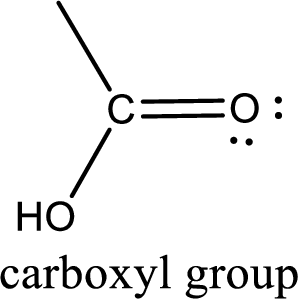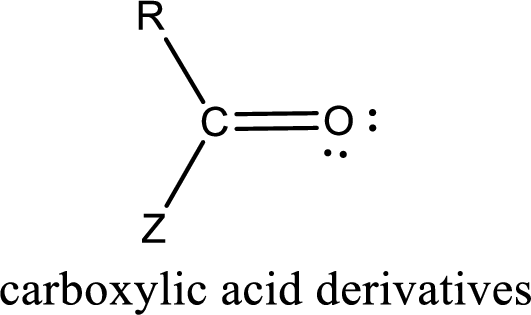
Concept explainers
Interpretation:
Structural feature that is common between
Concept Introduction:
Carbonyl groups are the one which contain a double bond between carbon and oxygen atom.

If a hydroxyl group is attached to a carbonyl group means it is known as carboxyl group. This can be represented as shown below,

Carboxylic acid derivatives are the ones that are synthesized from or converted to a carboxylic acid. The generalized structural representation of carboxylic acid derivatives is shown below,

Trending nowThis is a popular solution!

Chapter 16 Solutions
EBK GENERAL, ORGANIC, AND BIOLOGICAL CH
- A polyhydroxylated aldehyde or ketone containing 3 carbons or more is called O a. ganglioside O b. sugar O c. nucleoside O d. fatty acidarrow_forwardWhich of the following compounds would be most soluble in carbon tetrachloride, CCl4? a. NH3 d. CH3OHb. H2O e. C6H6c. HClarrow_forwardWhich of the following is the functional groups of carbohydrates? A. Carboxyl groups B. Aldehyde and Ketone groups C. Alcohol and Carboxyl groups D. Hydroxyl groups and Hydrogen groupsarrow_forward
- Which of the following statements concerning structural characteristics of bile acids is CORRECT? * A. No hydroxyl groups are present B. More hydroxyl groups are present than cholesterol C. Fewer hydroxyl groups are present than cholesterol D. Both have the same hydroxyl groups present with cholesterolarrow_forwardWhich of the following group(s) are present in natural amino acids: b. Tetrapyrrole group d. Guanidinium group a. Imidazole group c. Indole group e. Keto grouparrow_forwardWhich of the following lipids is most susceptible to lipid peroxidation? A. Stearic acid B. Oleic acid C. Linoleic acid D. Linolenic acidarrow_forward
- Which of the following is not a saturated fatty acid? A. Linoleic acid B. Caproic acid C. Myristic acid D. Palmitic acidarrow_forwardWhich of the following describes the interaction between the amino acid last eluted and the anion exchanger at pH 7? a. dipole-dipole b. hydrophobic c. ionic d. H-bondingarrow_forwardWhich of the following is not a functional group that can bond with carbon? a. sodium b. hydroxyl c. phosphate d. carbonylarrow_forward
- Which of the following is incorrect about an omega-3 fatty acid whose hydrocarbon chain has only one double bond? a. It is a monounsaturated fatty acid O b. None; all the other choices are correct Its double bond is between C #3 and C # 4 from the carboxyl group Od. Its shape is not straight or linear C.arrow_forwardWhich of the following linkages is found in sphingolipids? a. sphingosine-choline-phosphate b. sphingosine-phosphate-choline c. phosphate-sphingosine-choline d. none of the abovearrow_forward1.) Which phosphate group contains the higher energy of hydrolysis? A a phosphate group B. B phosphate group C. y phosphate group D. O phosphate group 2.) What type of biomolecule is adenine? A. Carbohydrate B. Lipid C. Nucleic Acid D. Proteinarrow_forward
 Biology (MindTap Course List)BiologyISBN:9781337392938Author:Eldra Solomon, Charles Martin, Diana W. Martin, Linda R. BergPublisher:Cengage Learning
Biology (MindTap Course List)BiologyISBN:9781337392938Author:Eldra Solomon, Charles Martin, Diana W. Martin, Linda R. BergPublisher:Cengage Learning
